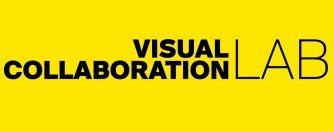The Visual Collaboration Lab is proud to announce that two papers were presented at HICSS 2021 !
Both of them are part of the collaboration in digital innovation research programme.
Idea management in a digital world: an adapted framework
Abstract: The continuing emergence of new digital technologies, platforms and infrastructure has opened unprecedented possibilities for innovation. Eager to seize these opportunities, many organizations adopt idea management programs to help leverage their employees’ ideas for digital innovations. However, we lack an integrated understanding of how the logics of digital innovation affect the practice of idea management. We therefore pose the following research question: “How can idea management programs be conceptualized in light of digital innovation?”. Drawing on the disparate yet complementary conceptual building blocks of open innovation and problem-solution pairs, we develop a revised conceptualization of how idea management is practiced in a digital context. Our framework suggests that idea management programs can be used by organizations as orchestration and cognitive sensemaking devices to support the matching, forking, merging and refinement of ideas. These insights shed fresh light on how innovations form and evolve in a pervasively digital world.
Reference: Krejci, D., Missonier S., (2021). Idea Management in a Digital World: An Adapted Framework, Hawaii International Conference on System Science, HICSS 2021
Concetualizing knowledge in digital innovation labs
Abstract: This paper examines the types of knowledge involved in IT exploration and exploitation; and how individuals can manage them. We focus on a particular organizational context described in previous research where individuals transfer between a digital innovation lab (DIL) and the existing organization for periods of time. Drawing on existent literature, we conceptualize six types of knowledge and relate them to the behaviors of learning, applying and intentional forgetting. We illustrate our conceptualization with two vignettes based on empirical data. Our conceptualization raises awareness of potential knowledge-related challenges associated with DILs, and provides insight on the composition of knowledge managed in a DIL to support fruitful IT exploration and digital innovation. Given the importance of digital innovation for today’s organizations, understanding the types of knowledge in a DIL set-up is of vital importance.
Reference: Iho S., Missonier S., (2021), Conceptualizing Knowledge in Digital Innovation Labs, Hawaii International Conference on System Sciences, HICSS 2021



 Brand identity is paramount for companies. Owing to the advancement of technology, faster innovation, growing competition, and more demanding consumers, managing a brand is becoming increasingly complex. This is especially true for entrepreneurs in startups and SMEs, who may not have the knowledge and various resources to ensure a clear branding strategy. This paper describes the development, in three steps, of a visual collaboration tool that supports practitioners in SMEs and startups to collaboratively strategize their brand identity in a structured way. This paper reports the creation, demonstration, and a first evaluation of what we have called the Brand Identity Tool.
Brand identity is paramount for companies. Owing to the advancement of technology, faster innovation, growing competition, and more demanding consumers, managing a brand is becoming increasingly complex. This is especially true for entrepreneurs in startups and SMEs, who may not have the knowledge and various resources to ensure a clear branding strategy. This paper describes the development, in three steps, of a visual collaboration tool that supports practitioners in SMEs and startups to collaboratively strategize their brand identity in a structured way. This paper reports the creation, demonstration, and a first evaluation of what we have called the Brand Identity Tool.